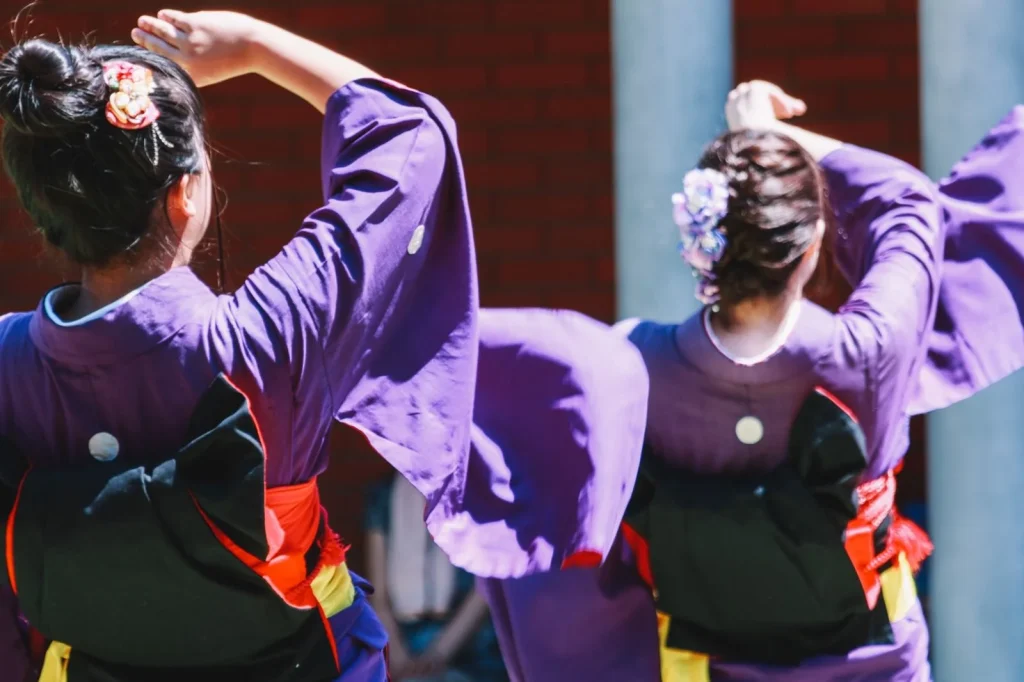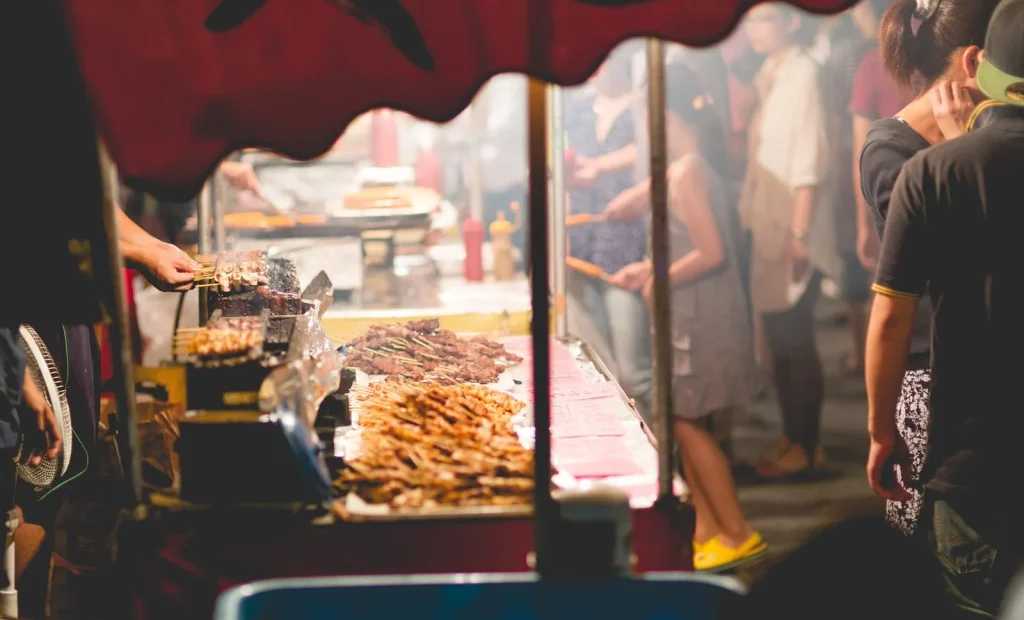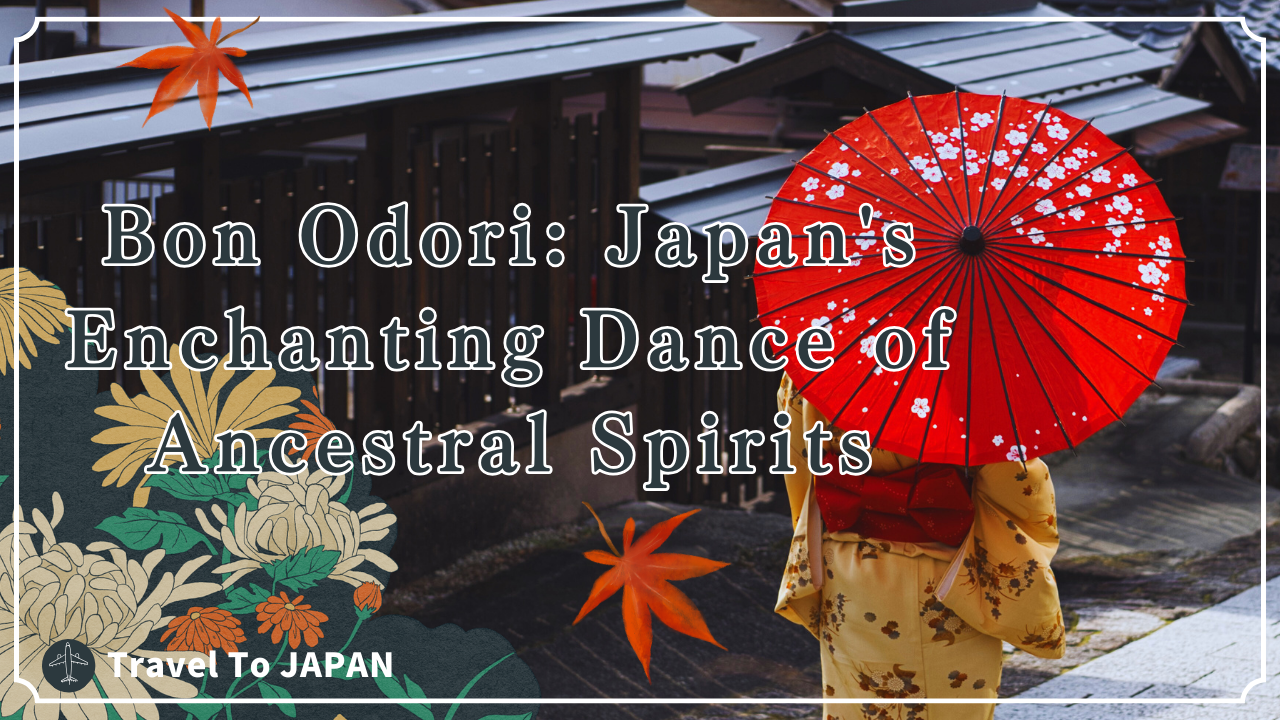Japan, a country rich in cultural traditions, presents a tapestry of festivities throughout the year that weave together ancient customs and modern celebrations.
Among these, the captivating dance known as “Bon Odori” stands out as a vibrant expression of community, remembrance, and joy.
In this extensive exploration, we delve into the roots, significance, and diverse expressions of Bon Odori, uncovering the cultural depth that makes it a cherished and enduring tradition.
Origins and Historical Evolution

Roots in Buddhist Tradition
Bon Odori finds its origins in Buddhist traditions and, more specifically, the observance of Obon. Obon, or Bon, is a Buddhist custom dedicated to commemorating one’s ancestors.
According to Buddhist beliefs, during the Obon season, ancestral spirits return to visit their living relatives. The Bon Odori dance serves as a way to welcome and entertain these spirits.
Evolving Folk Traditions
Over centuries, what began as a solemn Buddhist ritual evolved into a lively folk celebration.
The dance forms and music styles varied across regions, reflecting the diversity of Japan’s cultural landscape.
Bon Odori became not only a religious observance but also a time for communities to come together, celebrate, and express their unique identities.
The Essence of Bon Odori
A Dance of Remembrance
At its core, Bon Odori is a dance of remembrance.
It is an opportunity for families to honor their ancestors, express gratitude, and reflect on the continuity of life.
The rhythmic movements and spirited music create an atmosphere of festivity, transforming a solemn occasion into a joyous celebration.
Community Bonding
Bon Odori is a communal experience that fosters a sense of unity among participants.
People of all ages, from children to the elderly, join the dance circles, moving in synchronized patterns.
The circular formations symbolize the cyclical nature of life and the unbroken connection between the past and the present.
Regional Diversity in Bon Odori
Nishimonai Bon Odori (秋田県)
In the Akita Prefecture, the Nishimonai Bon Odori is renowned for its unique and slow dance movements.
Participants wear distinctive handwoven costumes, and the dance is accompanied by the hauntingly beautiful sounds of the shamisen, flute, and taiko drums.
Awa Odori (徳島県)
Originating in Tokushima, Awa Odori is one of Japan’s most famous traditional dances.
Characterized by lively and energetic movements, Awa Odori has become a major summer festival drawing participants and spectators from across the country.
Gujo Odori (岐阜県)
Gujo Odori in Gifu Prefecture is known for its prolonged celebrations lasting over a month.
The dance reflects the region’s festive spirit, and participants, locals and visitors alike, engage in joyful dancing throughout the night.
Kanto Matsuri (神奈川県)
The Kanto Matsuri in Kanagawa Prefecture features a unique form of Bon Odori involving elaborate arrangements of lanterns.
Performers skillfully balance these lanterns on their hands, foreheads, and shoulders while dancing, creating a mesmerizing spectacle.
Bon Odori and Modern Festivals

Obon Festivals in Summer
The Obon season typically occurs in mid-August, with Bon Odori festivals held across Japan.
During this time, communities come together to organize events that include traditional dances, music performances, food stalls, and various cultural activities.
Global Celebrations
The spirit of Bon Odori has transcended national borders, reaching communities around the world.
Japanese expatriate communities and enthusiasts abroad organize Bon Odori festivals, introducing this cultural gem to diverse audiences and fostering cross-cultural connections.
Dance Movements and Music
Basic Movements
Bon Odori dances often feature simple yet elegant movements.
Participants move in a circle, step forward and backward, and sway to the rhythmic beats of traditional instruments.
The simplicity of the movements allows people of all ages and skill levels to join in the festivities.
Musical Accompaniment
The music accompanying Bon Odori varies by region, with each locality contributing its unique melodies and rhythms.
Common instruments include taiko drums, shamisen (a three-stringed instrument), and flutes.
The music adds depth and emotion to the dance, creating an immersive experience for participants and onlookers alike.
Cultural Significance of Bon Odori
Honoring Ancestors
The central theme of Bon Odori is paying respects to ancestors.
As families come together to dance, share meals, and celebrate, they create an atmosphere of warmth and connection, fostering a deep sense of cultural identity and continuity.
Celebration of Life
Bon Odori is a celebration of life, emphasizing the cyclical nature of existence.
The dance, with its repetitive and circular movements, symbolizes the eternal cycle of birth, life, death, and rebirth, reinforcing the interconnectedness of generations.
Preserving Tradition
Participating in Bon Odori is a way for individuals to actively engage in preserving their cultural heritage.
The transmission of dance movements, music, and costumes from one generation to the next ensures the continuity of this vibrant tradition.
Challenges and Preservation Efforts
Changing Demographics
As Japan undergoes demographic shifts with an aging population and rural-to-urban migration, some local Bon Odori traditions face challenges in maintaining participation levels.
Efforts to engage younger generations and involve urban communities are crucial for the continued vitality of this cultural practice.
Cultural Exchange and Innovation
While preserving traditional forms, some Bon Odori festivals have embraced elements of innovation and cultural exchange.
Collaborations with contemporary music, dance styles, and art have breathed new life into the festivities, attracting a broader audience.
Conclusion: Bon Odori as a Living Tradition
In conclusion, Bon Odori is more than a traditional dance; it is a living testament to the cultural vibrancy of Japan.
Rooted in religious observances, this dance has evolved into a dynamic expression of community, continuity, and joy.
As Bon Odori continues to weave its way into the fabric of modern life, it remains a poignant reminder of the enduring connection between past, present, and future.
Whether witnessed in the spirited celebrations of local festivals or the rhythmic circles of dance enthusiasts, Bon Odori continues to enchant, inspire, and unite people in a celebration of life and cultural heritage.



コメント